Precipitated Calcium Carbonate (PCC) :-
Precipitated Calcium Carbonate (PCC) is a versatile industrial mineral formed through a chemical process. It is produced by adding calcium oxide to a solution of calcium chloride, resulting in the precipitation of fine calcium carbonate particles. PCC exhibits a controlled particle size and high purity, making it valuable in diverse applications.
Its use spans various industries, including papermaking, where PCC acts as a filler enhancing brightness and printability, and in the production of plastics and rubber, where it serves as a reinforcing agent. Additionally, PCC finds application in the food and pharmaceutical sectors, functioning as a calcium supplement. Its controlled manufacturing process allows for tailoring its properties, providing tailored solutions in industries requiring precise particle characteristics and chemical purity.
.jpg)
Precipitated Calcium Carbonate (PCC) Application :-
1. Paper Industry: PCC is widely used as a coating pigment in the paper industry to improve the brightness, opacity, and smoothness of paper. It enhances the printing properties and reduces the amount of expensive pulp needed in the papermaking process.
2. Paints and Coatings: PCC is used as a filler in paints and coatings to improve their rheological properties, reduce costs, and enhance the covering power. It also contributes to the opacity and matting of the coatings.
3. Plastics Industry: PCC is used as a filler in plastic compounds to improve the mechanical properties, such as stiffness and impact strength. It also contributes to reducing costs by replacing more expensive plastic resins.
4. Adhesives and Sealants: PCC is utilized in the formulation of adhesives and sealants to improve their performance, enhance thixotropic, and reduce costs.
5. Construction Industry: PCC is used in the construction industry as a filler in the production of concrete and mortar. It improves the workability, strength, and durability of these materials.
6. Rubber Industry: In the rubber industry, PCC is used as a reinforcing filler in the production of tires and other rubber products. It improves the mechanical properties of rubber compounds.
7. Environmental Applications: PCC is used in flue gas desulfurization processes to remove sulfur dioxide from industrial emissions. It reacts with sulfur dioxide to produce calcium sulfate, which can be used or disposed of safely.
8. Personal Care Products: PCC is used in personal care products such as toothpaste and cosmetics as a polishing and abrasive agent.
Ground Calcium Carbonate (GCC) :-
Ground Calcium Carbonate (GCC) is a mineral powder derived from natural limestone deposits. It is composed of calcium carbonate crystals and is widely used across industries for its diverse applications. GCC serves as a crucial filler in the production of plastics, rubber, and paints, enhancing mechanical properties and reducing costs. In the paper industry, GCC is employed to improve paper brightness, opacity, and printability.
Its presence in construction materials like concrete contributes to improved workability and durability. Additionally, GCC is utilized in environmental applications, such as wastewater treatment, due to its ability to adjust pH levels. As a versatile and cost-effective material, Ground Calcium Carbonate plays a vital role in enhancing the performance of various products in industries ranging from construction to environmental engineering.
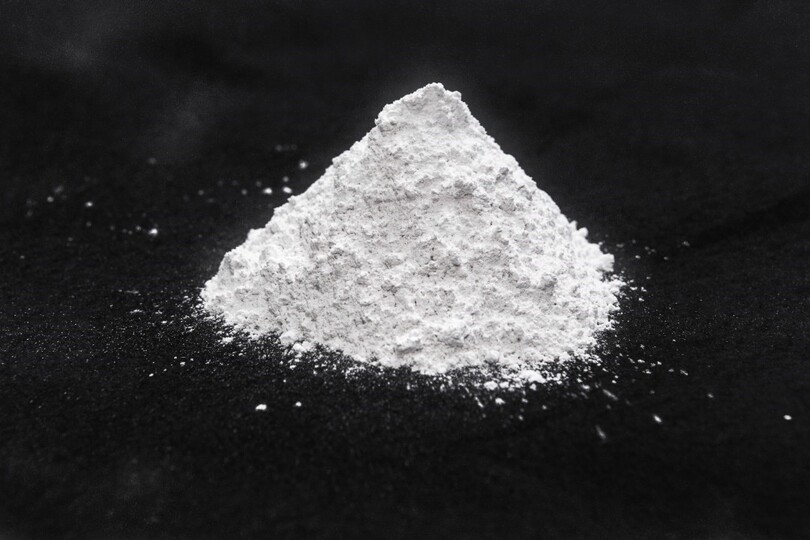
Ground Calcium Carbonate (GCC) Application :-
1. Construction Industry:- GCC is often used as a filler material in the production of concrete, mortar, and asphalt. It enhances the properties of these construction materials and improves their performance.
2. Paper Industry:- In the paper industry, GCC is widely used as a filler in the production of paper and cardboard. It improves the brightness, opacity, and printability of paper products.
3. Paints and Coatings:- GCC is employed as a pigment extender and functional filler in the manufacturing of paints and coatings. It enhances the rheological properties, improves coverage, and provides cost-effective alternatives to more expensive pigments.
4. Plastics Industry:- GCC is used as a filler in plastics to improve the mechanical properties of the final product, such as stiffness and impact resistance. It also reduces the overall cost of the plastic formulation.
5. Rubber Industry:- In the rubber industry, GCC is used as a reinforcing filler in the production of tires and other rubber products. It enhances the strength, abrasion resistance, and processing properties of rubber compounds.
6. Adhesives and Sealants:- GCC is added to adhesives and sealants to improve their performance and reduce costs. It enhances the adhesive properties and helps achieve the desired consistency.
7. Environmental Applications:- GCC is used in environmental applications, such as in the treatment of wastewater to adjust pH levels and remove impurities.
8. Animal Feed:- It is used as a calcium supplement in animal feed to promote bone development and overall health in livestock.
9. Plumbing and Construction Sealants:- GCC is used in the formulation of sealants for plumbing and construction applications, providing improved adhesion and durability.
10. Personal Care Products:- In the personal care industry, GCC may be used in the formulation of toothpaste and cosmetics as a mild abrasive and thickening agent.
Coated GCC :-
Coated Ground Calcium Carbonate (GCC) powder involves GCC particles treated with surface coatings to enhance specific properties for varied applications. The coating, typically applied via surface modification, improves dispersion, compatibility, and performance in diverse industries. These coatings optimize the interaction between GCC and host materials, enhancing properties like dispersion, adhesion, and rheology.
They ensure better integration of GCC into plastic, paint, and adhesive matrices, improving mechanical strengths and durability. Coated GCC finds extensive use in industries like plastics, paints, adhesives, and construction, offering tailored solutions due to its modified surface properties, enabling superior performance in specific applications.
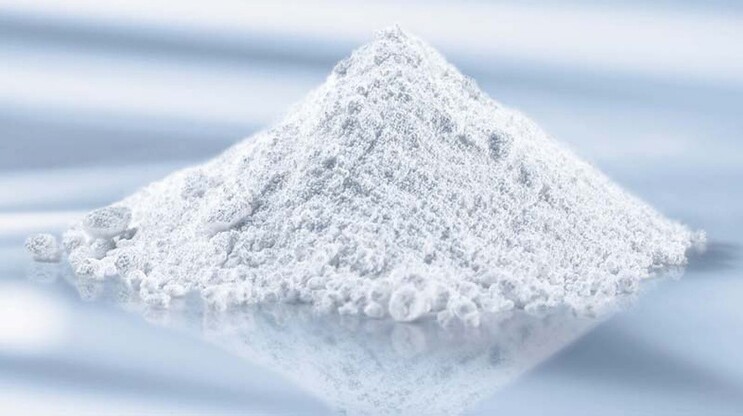
Coated GCC Application :-
1. Plastics Industry: - Coated GCC is used as a filler in plastic compounds to improve the mechanical properties of plastic products. The coating enhances the compatibility between GCC and the polymer matrix, leading to improved dispersion, stiffness, and impact resistance.
2. Paints and Coatings: - In the paints and coatings industry, coated GCC is employed as a functional filler to enhance properties such as rheology, opacity, and durability. The coating helps improve the dispersibility of GCC in the paint formulation and promotes better adhesion to surfaces.
3. Paper Industry: - Coated GCC is used in the paper industry as a filler to improve the brightness, opacity, and printability of paper products. The coating on GCC helps control its interaction with paper fibers and contributes to better paper surface properties.
4. Adhesives and Sealants: - Coated GCC is added to adhesives and sealants to improve their performance. The coating enhances the compatibility of GCC with the adhesive or sealant matrix, contributing to improved bonding and overall product quality.
5. Rubber Industry: - In the rubber industry, coated GCC is used as a reinforcing filler in the production of tires and other rubber products. The coating improves the dispersion of GCC in the rubber matrix, leading to enhanced mechanical properties.
6. Construction Industry: - Coated GCC can be used in the construction industry as a filler in materials such as concrete and mortar. The coating helps improve the compatibility of GCC with the cementitious matrix, contributing to better workability and performance of construction materials.
7. Plumbing and Construction Sealants: - Coated GCC is used in the formulation of sealants for plumbing and construction applications. The coating improves the compatibility with the sealant matrix, contributing to better adhesion and durability.
8. Environmental Applications: - Coated GCC may be used in environmental applications, such as in water treatment processes, where controlled dispersion and reactivity are important factors.
Barytes :-
Barytes powder, or barium sulfate, is a mineral known for its high density and chemical inertness. It is commonly used in industries such as oil and gas, where it serves as a weighting agent in drilling fluids to control well pressure during drilling operations. In the paints and coatings industry, barytes powder functions as a filler, enhancing properties like opacity and durability.
Due to its high atomic number, it finds application in radiation shielding materials, making it crucial in medical imaging, industrial radiography, and nuclear facilities. Additionally, barytes powder is utilized in the production of lead-acid batteries, contributing to improved performance in the positive plates.
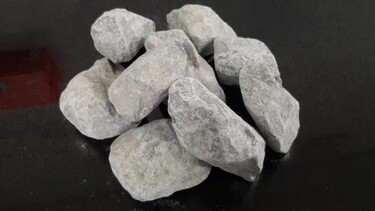
Barytes Applications :-
1. Oil and Gas Industry: - Barytes is used in the oil and gas drilling industry as a weighting agent in drilling fluids. It helps control well pressure and prevents blowouts by balancing the pressure exerted by the drilling mud.
2. Paints and Coatings: - Barytes is used as a filler in the production of paints and coatings. It enhances the viscosity and improves the durability and weather resistance of the finished paint products.
3. Plastics Industry: - In the plastics industry, Barytes is used as a filler to improve the density, hardness, and flame-retardant properties of plastic products.
4. Rubber Industry: - Barytes is used as a filler in the production of rubber products, such as tires, to enhance their strength, durability, and resistance to abrasion.
5. Paper Industry: - Barytes is employed as a filler in the paper industry to improve the brightness, opacity, and printability of paper and cardboard products.
6. Textile Industry: - In the textile industry, Barytes is used as a weighting agent in the production of certain types of fabrics.
7. Ceramics and Glass Industry: - Barytes is used in the ceramics and glass industry as a fluxing agent. It helps reduce the melting temperature of glass and ceramics, facilitating the manufacturing process.
8. Radiation Shielding: - Due to its high density, Barytes is used in the production of radiation shielding materials. It is employed in medical imaging, industrial radiography, and nuclear facilities to provide protection from radiation.
9. Battery Manufacturing: - Barytes is used in the production of lead-acid batteries as a component in the positive plates, contributing to the overall performance of the battery.
10. Construction Industry: - Barytes is sometimes used in the construction industry as a filler in various construction materials, such as concrete, to improve their properties.
11. Chemical Industry:- Barytes is used in the chemical industry as a precursor for the production of various barium compounds.
Talc Powder :-
Talc powder is a mineral characterized by its remarkable softness, hydrophobic nature, and lubricating properties. Widely used across industries, talc finds applications in cosmetics, where it provides a smooth texture and moisture absorption, as well as in pharmaceuticals, serving as a lubricant in tablet production.
Its role as a reinforcing filler in plastics enhances stiffness and impact resistance, while in the paints and coatings industry, talc acts as a filler and extender, improving properties like opacity and adhesion. Additionally, talc is utilized in the paper industry to enhance paper characteristics, and its versatility extends to various sectors, making it a valuable mineral in industrial applications.
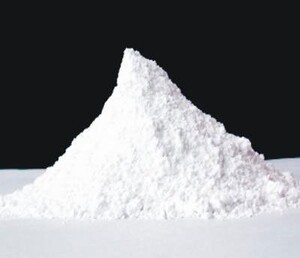
Talc Powder Applications :-
1. Cosmetics and Personal Care Products: - Talc is a common ingredient in cosmetics, including baby powders, face powders, and body powders. It is used for its ability to absorb moisture and provide a smooth, soft texture.
2. Plastics Industry: - Talc is employed as a filler in the plastics industry to improve the properties of plastic products. It enhances stiffness, impact resistance, and dimensional stability while reducing production costs.
3. Paints and Coatings: - Talc is used as a filler and extender in the production of paints and coatings. It contributes to the properties of the final product, such as opacity, rheology, and adhesion.
4. Paper Industry: - Talc is used as a filler in the paper industry to improve opacity, brightness, and printability of paper products. It also contributes to the reduction of pulp usage.
5. Rubber Industry: - In the rubber industry, talc is used as a reinforcing filler to enhance the mechanical properties of rubber products, including improved tensile strength and dimensional stability.
6. Ceramics Industry: - Talc is used in the ceramics industry as a fluxing agent. It helps reduce firing temperatures, improve thermal shock resistance, and enhance the properties of ceramic products.
7. Adhesives and Sealants: - Talc is added to adhesives and sealants to improve their properties. It acts as a reinforcing filler, providing strength and viscosity control.
8. Agriculture: - Talc is used in agriculture as a carrier for pesticides and fertilizers. It helps improve the flowability and dispersibility of these products.
9. Textile Industry: - Talc is used in the textile industry as a lubricant in the production of synthetic fibres and as a filler in certain textile products.
10. In the Automotive Industry: - Talc is used in automotive components, such as dashboards and interior trims, for its ability to enhance the appearance and feel of surfaces.
Calcined Clay :-
Calcined clay powder is a processed form of clay that has been subjected to high temperatures to remove impurities and alter its mineralogical composition. This heat treatment transforms the clay into a pozzolanic material with enhanced reactivity. Widely used in the construction industry, calcined clay is employed as a supplementary cementitious material in the production of environmentally friendly and high-performance concrete.
Its incorporation reduces the carbon footprint of concrete by lowering the clinker content in cement mixes. Additionally, calcined clay enhances the durability and strength of concrete structures while providing cost-effective and sustainable solutions for the construction sector. The use of calcined clay contributes to improved workability, reduced permeability, and increased resistance to chemical attacks in concrete applications.
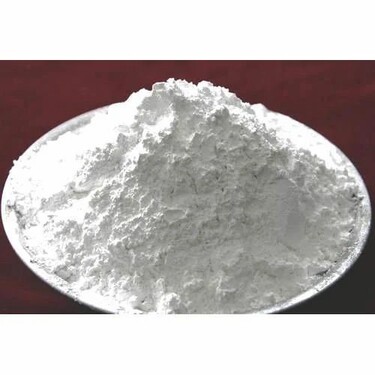
Calcined Clay Applications :-
1. Construction Industry: - Concrete Production: Integrated as a supplementary material in concrete, calcined clay reduces reliance on Portland cement, leading to improved sustainability and reduced environmental impact.
2. Ceramics and Pottery: - Raw Material: In ceramics and pottery, calcined clay serves as a crucial raw material, enhancing the final products' strength and minimizing shrinkage during firing.
3. Agriculture: - Soil Amendment: Utilized as a soil amendment, calcined clay enhances soil structure, promotes water retention, and increases nutrient availability for healthier plant growth.
4. Oil and Gas Industry: - Drilling Fluids: Incorporated into drilling fluids, calcined clay aids in controlling fluid loss during drilling operations and stabilizes the borehole.
5. Environmental Applications: - Waste Treatment: In waste treatment processes, calcined clay facilitates the absorption of contaminants, contributing to effective waste remediation.
6. Paper Industry: - Coating and Filling: Within the paper industry, calcined clay is employed as a coating and filling material, improving the smoothness and printing characteristics of paper.
7. Plastics and Polymers: - Filler Material: As a filler material in plastics and polymers, calcined clay enhances mechanical and thermal properties, contributing to the overall performance of the final product.
8. Paints and Coatings: - Pigment Extender: Used as a pigment extender in paints and coatings, calcined clay improves opacity, texture, and rheological properties, enhancing the overall quality of the coatings.
Hydrous Clay :-
Hydrous clay powder refers to a type of clay that contains water molecules within its mineral structure. This clay, characterized by its plasticity and malleability, is widely used in various industries. In ceramics, hydrous clay serves as a fundamental component for pottery and porcelain production due to its ability to retain its shape during shaping and firing processes. Its natural plasticity makes it suitable for modelling and sculpting.
Additionally, hydrous clay finds application in cosmetics, where it is utilized in facial masks and skincare products for its absorbent and purifying properties. The water content in hydrous clay contributes to its workability and ease of use in artistic and industrial applications. The firing process removes the water, leaving behind a solid ceramic structure with desired properties, such as strength and porosity, making hydrous clay a versatile material across artistic, cosmetic, and manufacturing domains.
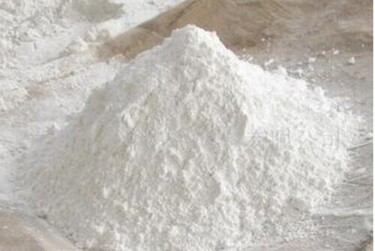
Hydrous Clay Applications :-
1. Cosmetics and Skincare: - Face Masks and Cleansers: Hydrous clay, such as kaolin, is a popular ingredient in facial masks and cleansers due to its ability to absorb excess oil and impurities, promoting skin purification.
2. Ceramics and Pottery: - Clay Bodies: In ceramics, hydrous clay is a fundamental component in the formulation of clay bodies, contributing to the workability and plasticity of the material.
3. Drilling Fluids: - Oil and Gas Exploration: Hydrous clay is employed in the formulation of drilling fluids for oil and gas exploration. It helps control viscosity, suspension, and fluid loss during drilling operations.
4. Construction and Building Materials: - Cement Production: In the construction industry, hydrous clay is sometimes used in the production of cement as a supplementary material, contributing to the material's overall properties.
5. Environmental Applications: - Wastewater Treatment: Due to its adsorption properties, hydrous clay is utilized in wastewater treatment processes to remove impurities and contaminants from water.
6. Paints and Coatings: - Pigment: In the paints and coatings industry, hydrous clay acts as a pigment extender, contributing to the formulation of coatings with improved texture and coverage.
7. Paper Industry: - Coating and Filling: Similar to calcined clay, hydrous clay is used in the paper industry as a coating and filling material to enhance paper properties.
Silica Powder :-
Silica powder, composed of finely ground silica particles, is a versatile material with widespread applications. Its high purity and inert nature make it valuable in various industries. In the electronics industry, silica powder is used as a filler in the manufacturing of semiconductors and as a component in the production of optical fibres due to its excellent thermal and optical properties.
In the cosmetics sector, it serves as an absorbent agent in skincare products, providing a silky texture and matte finish. Silica powder is also employed in the rubber and plastic industries as a reinforcing filler to enhance mechanical properties. Furthermore, it finds application in construction materials, such as concrete and mortars, to improve durability and reduce shrinkage. The versatility of silica powder extends to its use as a desiccant and catalyst in chemical processes, making it a crucial material in diverse industrial applications.
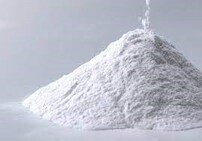
Silica Powder Applications :-
1. Cosmetics and Skincare: Abrasive Agent: Silica powder is used in cosmetics and skincare products, such as exfoliating scrubs and toothpaste, as an abrasive agent for gentle yet effective removal of dead skin cells.
2. Construction and Building Materials: Concrete Production: Silica powder is often used as a key component in the production of concrete and cement. It enhances the strength and durability of concrete structures.
3. Electronics and Semiconductors: Semiconductor Manufacturing: Silica is employed in the electronics industry, particularly in the manufacturing of semiconductors and integrated circuits, where it is used as an insulator and in the creation of silicon wafers.
4. Paints and Coatings: Anti-Caking Agent: Silica powder serves as an anti-caking agent in powdered paints and coatings, preventing clumping and ensuring a smooth application.
5. Plastics and Rubber: Reinforcement: Silica is used as a reinforcing filler in the production of plastics and rubber, enhancing the mechanical properties and stability of the final products.
6. Environmental and Filtration: Water Filtration: Silica powder is utilized in water treatment and filtration processes to remove impurities and ensure water quality.
7. Oil and Gas Industry: Drilling Fluids: Silica is used in the formulation of drilling fluids for oil and gas exploration, aiding in controlling viscosity and fluid loss during drilling operations.
8. Glass Manufacturing: Glass Production: Silica is a key component in the production of glass, providing transparency, strength, and heat resistance.
Dolomite :-
Dolomite powder is a natural mineral substance composed of calcium magnesium carbonate. Widely utilized in various industries, dolomite powder is recognized for its versatility and unique properties. In agriculture, it serves as a soil conditioner, providing essential nutrients and balancing pH levels for improved crop growth. The construction industry extensively employs dolomite powder as a concrete aggregate, enhancing the durability and strength of structures.
In the manufacturing of glass and ceramics, dolomite is utilized as a fluxing agent, reducing the melting temperature and enhancing the properties of these materials. Additionally, dolomite powder is a crucial component in the production of refractory bricks used in high-temperature applications. Its use in the metallurgical industry for the production of iron and steel further underscores its significance, acting as a flux in the smelting process. The diverse applications of dolomite powder across agriculture, construction, glass, ceramics, and metallurgy highlight its pivotal role in various industrial sectors.

Dolomite Applications :-:-
1. Construction and Building Materials: - Concrete Production: Dolomite powder is used as a supplementary cementations material in concrete, contributing to improved durability and strength.
2. Agriculture: - Soil Amendment: Dolomite powder is a source of magnesium and calcium, making it valuable as a soil amendment to neutralize acidic soils and provide essential nutrients for plant growth.
3. Steel Production: - Refining Agent: In the steel industry, dolomite is used as a fluxing material in the production of iron and steel, aiding in the removal of impurities.
4. Glass manufacturing: - Glass Production: Dolomite is added to glass formulations to improve the optical properties, durability, and resistance to thermal stress.
5. Ceramics and Pottery: - Raw Material: Dolomite serves as a raw material in the production of ceramics and pottery, contributing to the formation of stable and durable products.
6. Water Treatment: - pH Adjustment: Dolomite powder is employed in water treatment processes to adjust pH levels and soften water by removing excess metals.
7. Environmental Applications: - Flue Gas Desulfurization: Dolomite is used in flue gas desulfurization processes to remove sulfur dioxide from industrial emissions.
8. Paints and Coatings: - Filling Material: Dolomite powder is used as a filler material in paints and coatings, improving the hardness, weather resistance, and durability of the coatings.
9. Plastics and Rubber: - Filler: Dolomite serves as a filler material in the production of plastics and rubber, enhancing mechanical properties and reducing costs.
Bleaching Earth :-
Bleaching Earth powder, also known as activated bleaching clay or fuller's earth, is a versatile absorbent material used primarily in the refining of edible oils and fats. Composed of natural clay minerals, it undergoes activation processes, enhancing its adsorption capacity. In the edible oil industry, it plays a crucial role in the removal of impurities such as colour pigments, chlorophyll, and trace metals, thereby improving the oil's appearance and stability.
The high surface area and porosity of bleaching earth make it an effective adsorbent for various organic and inorganic substances. Beyond its use in oil refining, it finds applications in the cosmetic industry for decolorizing and purifying certain oils and waxes. The pharmaceutical industry also utilizes bleaching earth in the purification of pharmaceutical-grade oils. Additionally, in the beverage industry, it aids in the decolorization and purification of certain beverage products. The adsorptive properties and versatility of bleaching earth make it a critical material in ensuring the quality and purity of various products in different industrial sectors.
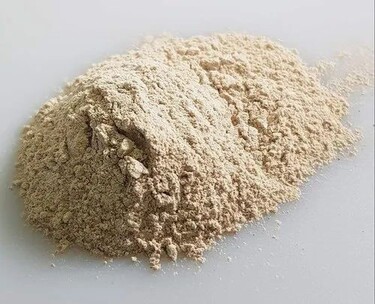
Bleaching Earth Applications :-
1. Edible Oil Refining: - Vegetable Oils and Fats: Bleaching earth is widely used in the refining of vegetable oils and fats to remove impurities, colour pigments, and undesirable substances, improving the oil's appearance and quality.
2. Petroleum Industry: - Oil and Wax Purification: In the petroleum industry, bleaching earth is employed in the purification of mineral oils, paraffin waxes, and other hydrocarbons by adsorbing impurities and colour bodies.
3. Soap and Wax Production: - Refining Processes: Bleaching earth is used in the refining of various products in the soap and wax industries to remove impurities and colorants.
4. Chemical Industry: - Purification: It is utilized in the purification of various chemicals and pharmaceutical intermediates by adsorbing contaminants and colour impurities.
5. Beverage Industry: - Decolourization: In the beverage industry, bleaching earth may be used to remove colour and impurities from juices, wines, and other beverages.
6. Textile Industry: - Oil and Fat Treatment: In the textile industry, bleaching earth is used for the treatment of oils and fats used in textile processing, helping to achieve the desired quality in the end product.
7. Cosmetics and Personal Care: - Cosmetic Products: Bleaching earth is sometimes used in the cosmetics industry for the purification and decolourization of certain cosmetic products.
8. Environmental Applications: - Wastewater Treatment: Activated clay may be employed in wastewater treatment processes to adsorb pollutants and contaminants.
9. Pharmaceuticals: - Pharmaceutical Processing: Bleaching earth can be used in the pharmaceutical industry for the purification of certain drug substances.
Bentonite Clay :-
Bentonite clay powder, derived from the volcanic ash alteration, is a versatile natural substance known for its myriad applications. Composed mainly of montmorillonite, it exhibits unique colloidal and adsorbent properties. Widely used in the cosmetic industry, bentonite clay acts as a natural cleanser and detoxifier in skincare products, drawing impurities and excess oil from the skin. In the construction industry, its swelling properties make it an effective sealant in geosynthetic clay liners for landfill base liners and other containment systems.
Bentonite clay also plays a pivotal role in drilling fluids for oil and gas wells, providing viscosity and fluid loss control. Its ability to absorb and bind with toxins and heavy metals makes it valuable in the detoxification process in both humans and animals. Furthermore, bentonite clay is employed in the food industry as a clarifying agent in the production of wines and juices, enhancing their quality and appearance. The diverse applications of bentonite clay powder underscore its significance across cosmetic, construction, environmental, and food-related sectors

Bentonite Clay Applications :-
1. Cosmetics and Skincare: - Face Masks and Cleansers: Bentonite clay is a popular ingredient in cosmetic and skincare products, such as face masks and cleansers, for its ability to absorb excess oil, remove impurities, and promote skin detoxification.
2.Drilling and Geotechnical Engineering: - Drilling Mud: In the oil and gas industry and geotechnical engineering, bentonite clay is used as a component of drilling mud for its viscosity, lubricating properties, and ability to seal boreholes.
3. Construction and Tunneling: - Sealing and Waterproofing: Bentonite clay is used for sealing and waterproofing purposes in construction and tunneling projects. It swells when hydrated, forming an impermeable barrier.
4. Environmental Applications: - Landfill Liners: Bentonite clay is used in the construction of landfill liners to create a barrier that prevents the leakage of contaminants into the soil and groundwater.
5. Iron Ore Pelletizing: - Binder: In the iron ore pelletizing process, bentonite clay is used as a binder to improve the strength and durability of the pellets.
6. Paper Industry: - Retention and Drainage: Bentonite is used in the paper industry to improve the retention and drainage of water during the papermaking process.
7. Foundry Industry: - Binder in Sand Molding: Bentonite clay is used as a binder in sand molding in the foundry industry to create molds for metal casting.
8. Environmental Remediation: - Soil Stabilization: Bentonite is used for soil stabilization in environmental remediation projects to prevent the migration of contaminants.
CMC :-
Carboxymethyl cellulose (CMC) additives play a crucial role in various industries, offering unique properties and functionalities. These additives are derived from cellulose and are water-soluble. In the food industry, CMC is used as a thickener, stabilizer, and texture modifier in a wide range of products, contributing to improved consistency and mouthfeel. In pharmaceuticals, CMC acts as a binder in tablet formulations, aiding in the cohesion of ingredients. In the textile industry, CMC additives are utilized as sizing agents, enhancing yarn and fabric properties such as strength and wear resistance. Additionally, CMC is employed in the paper industry as a coating agent to improve paper strength and printability. Its water retention capabilities make CMC additives valuable in personal care products, acting as a stabilizer in products like lotions and toothpaste. The versatility and diverse applications of CMC additives highlight their significance in contributing to the functionality and quality of various consumer and industrial products.
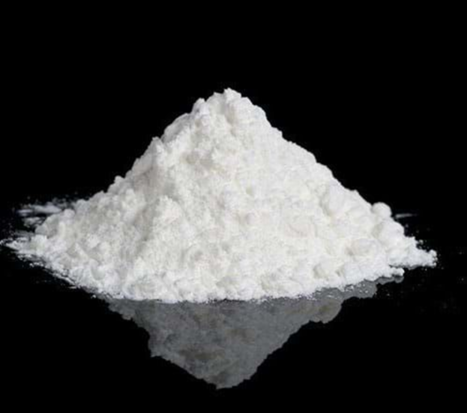
CMC Application :-
1. Cosmetics and Personal Care:
• Viscosity Modifier: CMC is utilized in cosmetics and personal care products as a viscosity modifier. It enhances the consistency and stability of formulations such as creams, lotions, and shampoos.
2. Textile Industry:
• Sizing Agent: In textiles, CMC is employed as a sizing agent during the weaving process. It enhances the strength and smoothness of yarns, contributing to improved fabric quality.
3. Paper Industry:
• Paper Coating: CMC finds application in paper coatings, where it improves the surface characteristics of paper, making it more receptive to printing inks and enhancing print quality.
4. Detergents and Cleaners:
• Thickener: CMC acts as a thickening agent in liquid detergents and cleaners, providing improved viscosity for better product stability and performance.
5. Oil and Gas Industry:
• Drilling Fluids: CMC is used in drilling fluids for its ability to control viscosity and fluid loss. It helps maintain stability in drilling operations in the oil and gas industry.
6. Ceramics and Pottery:
• Ceramic Glazes: In ceramics, CMC is added to glazes to enhance adhesion and suspend particles, contributing to the even application and appearance of ceramic coatings.
7. Paints and Coatings:
• Latex Paints: CMC serves as a thickening and stabilizing agent in latex paints, improving the texture, flow, and application properties of the paint.
8. Construction Industry:
• Tile Adhesives: CMC is used in tile adhesives to improve adhesion properties and workability. It contributes to the bonding strength and ease of application.
9. Mining and Ore Processing:
• Ore Flotation: In mining, CMC is employed in ore flotation processes to enhance the selectivity and efficiency of mineral separation by improving the properties of flotation reagents.
10. Water Treatment:
• Flocculant: CMC is utilized as a flocculant in water treatment processes, aiding in the sedimentation and removal of suspended particles, contributing to improved water quality.
MHEC :-
Methyl Hydroxyethyl Cellulose (MHEC) additives are essential components widely used in various industries for their unique properties. Derived from cellulose, MHEC is a water-soluble polymer that serves as a thickener, stabilizer, and film-forming agent. In the construction industry, MHEC is a key additive in cement-based mortars, rendering improved workability, water retention, and enhanced adhesion to substrates.
Its effectiveness in preventing sagging and improving open time makes MHEC valuable in the production of adhesives and joint compounds. In the pharmaceutical industry, MHEC is used as a binder in tablet formulations. The versatility of MHEC extends to the personal care sector, where it is employed in products like lotions and creams for its thickening and stabilizing properties. Furthermore, MHEC additives play a vital role in enhancing the performance of water-based paints and coatings, contributing to improved viscosity and application properties. The broad applicability of MHEC highlights its importance in contributing to the functionality and quality of products in construction, pharmaceutical, personal care, and coatings industries.
.jpg)
MHEC Application :-
1. Construction Industry:
• Tile Adhesives: MHEC is used as a thickener and water retention agent in tile adhesives. It improves the workability of the adhesive, enhances adhesion, and reduces sagging.
2. Cement-Based Mortars:
• Mortars and Renders: MHEC is added to cement-based mortars and renders as a water retention agent and thickener. It improves the consistency and application properties of the mix.
3. Exterior Insulation and Finish Systems (EIFS):
• EIFS Coatings: MHEC is used in EIFS coatings to enhance the workability and water retention of the coating material, ensuring better adhesion to the substrate.
4. Gypsum-Based Products:
• Joint Compounds: In the production of gypsum-based joint compounds, MHEC acts as a thickening agent and provides better workability during application.
5. Paints and Coatings:
• Latex Paints: MHEC is utilized in latex paints as a thickening and stabilizing agent. It helps control viscosity, improve paint application properties, and prevent settling.
6. Oil and Gas Industry
• Drilling Fluids: MHEC is employed in drilling fluids in the oil and gas industry. It acts as a rheology modifier, controlling the viscosity and fluid loss during drilling operations.
7. Personal Care Products:
• Shampoos and Lotions: MHEC is added to personal care products like shampoos and lotions as a thickening agent, improving the texture and stability of the formulations.
8. Adhesives:
• General Adhesives: MHEC is used in various adhesives to control viscosity and improve adhesion properties.
RDP :-
Redispersible Polymer Powder (RDP) additives are crucial components used in various industries for their versatile characteristics. Comprising polymer powders obtained through the spray-drying of polymer dispersions, RDP enhances the performance of construction materials such as mortars and adhesives. In the construction industry, RDP acts as a crucial binder, contributing to improved flexibility, adhesion, and durability of cement-based products. Additionally, RDP additives improve the water retention and workability of mortar formulations. Their redispersibility in water after drying ensures optimal performance during application. RDP additives also find applications in the production of self-leveling compounds, tile adhesives, and grouts, enhancing their performance and reducing the risk of cracking. The broad utilization of RDP additives underscores their significance in optimizing the properties of construction materials, contributing to the overall quality and durability of finished products.
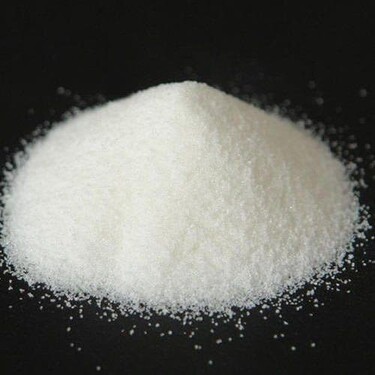
RDP Application :-
1. Construction Industry: - Tile Adhesives: RDP is used in tile adhesives to enhance adhesion strength, flexibility, and workability. It improves the performance of the adhesive and helps prevent cracking.
2. Exterior Insulation and Finish Systems (EIFS): - EIFS Coatings: RDP is added to EIFS coatings to improve flexibility, water resistance, and adhesion to substrates. It enhances the overall durability and performance of the coating.
3. Cement-Based Mortars: - Mortars and Renders: RDP is commonly used in cement-based mortars and renders to improve bonding strength, workability, and water retention. It contributes to the overall durability of the material.
4. Self-Leveling Compounds: - Flooring Compounds: In self-leveling flooring compounds, RDP is used to enhance flow properties, adhesion, and flexibility. It helps create a smooth and level surface.
5. Gypsum-Based Products:- Joint Compounds: RDP is added to gypsum-based joint compounds to improve bonding strength, crack resistance, and workability. It contributes to a smoother finish.
6. Waterproofing Membranes: - Flexible Waterproofing Membranes: RDP is incorporated into flexible waterproofing membranes to improve flexibility, adhesion, and resistance to water penetration.
7. Repair Mortars: - Concrete Repair: RDP is used in repair mortars to enhance adhesion to existing concrete, flexibility, and overall durability. It helps in the restoration of damaged concrete surfaces.
8. Textured Finishes: - Textured Wall Finishes: RDP is employed in textured wall finishes to improve adhesion of the finish to the substrate and enhance the texture's durability.
9. Adhesives: - General Adhesives: RDP is utilized in various adhesives to improve bonding strength, flexibility, and workability. It is commonly used in adhesives for bonding porous and non-porous surfaces.
10. Thermal Insulation Systems: - Insulation Materials: RDP is added to thermal insulation systems to enhance the adhesion of insulation materials to the substrate, contributing to the overall performance of the system.
Deformer :-
Deformer additives are specialized substances employed in industrial processes to control foam formation. These additives are crucial in applications where excessive foam can hinder efficiency or product quality. Commonly used in industries such as manufacturing, chemical processing, and wastewater treatment, deformer additives act to break down or inhibit foam formation, improving process stability.
They are particularly valuable in applications involving agitated liquids or high turbulence where foam generation is a common challenge. Deformer additives typically work by reducing the surface tension of the liquid, destabilizing the foam bubbles. The selection of an appropriate deformer depends on the specific process requirements and the nature of the substances involved. These additives play a vital role in optimizing industrial processes, ensuring smoother operations and maintaining product quality.
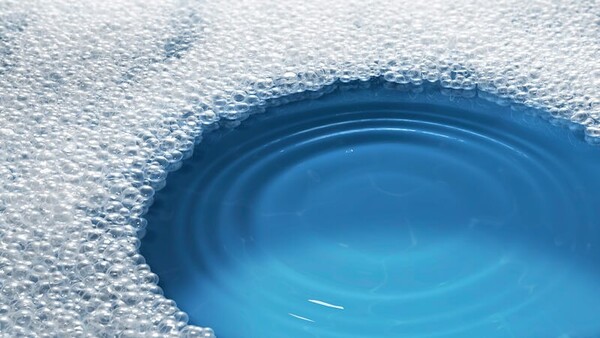
Deformer Applications :-
1. Paints and Coatings: - Water-Based Paints: Deformer additives are used in water-based paints to control foam formation during production, storage, and application. They help achieve better surface appearance and prevent issues like cratering.
2. Adhesives and Sealants: - Adhesive Manufacturing: Deformers may be added to adhesives and sealants to prevent excessive foaming during mixing and application. This is crucial for maintaining product quality.
3. Printing Inks: - Ink Formulations: In the printing industry, deformer additives are used in ink formulations to control foam during mixing, stirring, and printing processes.
4. Food and Beverage Industry: - Food Processing: Deformers are utilized in the food industry to control foam during various processing stages, such as mixing, blending, and filling.
5. Pharmaceuticals: - Drug Manufacturing: In pharmaceutical manufacturing, deformer additives can be employed to control foam during the production of liquid medications and other pharmaceutical formulations.
6. Water Treatment: - Wastewater Treatment: Deformers may be used in wastewater treatment processes to control foam in treatment tanks and improve the efficiency of the treatment.
7. Metalworking Fluids: - Cutting Fluids: In metalworking, deforming agents are added to cutting fluids to prevent excessive foaming during machining processes, ensuring smooth operations.
8. Textile Industry: - Dyeing Processes: Deformers can be applied in dyeing processes within the textile industry to control foam, particularly in dye baths and during textile finishing.
9. Cleaning Products: -Detergents and Cleaners: Deformers are added to some detergents and cleaning products to control foam during use, preventing excessive suds formation.
10. Oil and Gas Industry: - Drilling Fluids: Deforming agents may be used in drilling fluids in the oil and gas industry to control foam during drilling operations.
Dispersing Agent :-
Dispersing agent additives play a crucial role in various industries, particularly in formulations involving particles or substances that tend to clump together. These additives enhance the dispersion of solids in liquids, promoting stability and uniformity in the final product. Commonly used in paints, inks, and coatings, dispersing agents improve pigment distribution, preventing agglomeration and ensuring a consistent colour and texture.
Additionally, in the pharmaceutical and food industries, dispersing agents contribute to the even distribution of active ingredients, enhancing the efficacy and taste of the final products. The effectiveness of dispersing agents is attributed to their ability to reduce particle agglomeration by providing a stable and well-dispersed mixture. The choice of dispersing agent depends on factors such as the nature of the particles, the medium, and the desired properties of the end product. Overall, dispersing agent additives play a pivotal role in achieving homogeneity and optimal performance in a wide range of formulations and industrial processes.
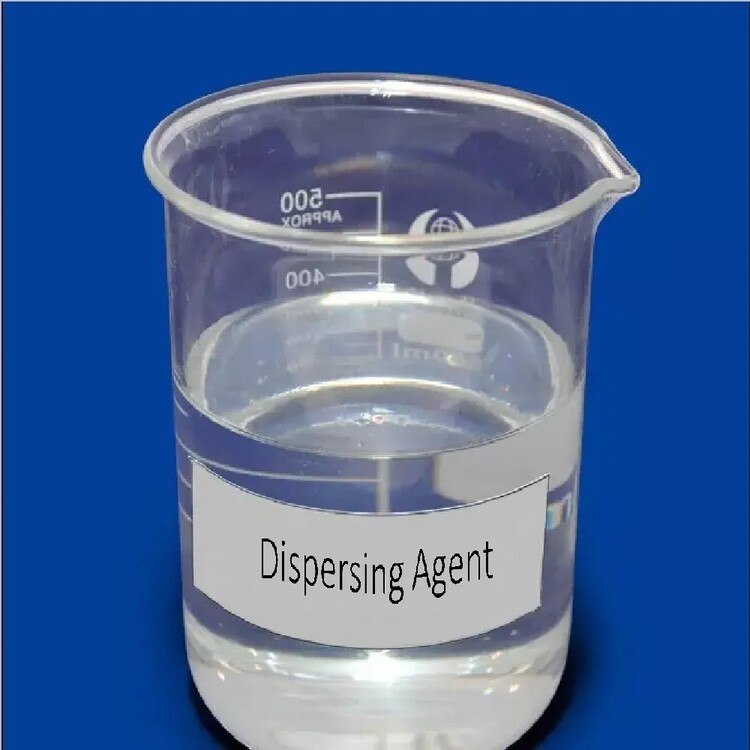
Dispersing Agent Applications :-
1. Paints and Coatings: - Pigment Dispersants: - In the paint and coatings industry, dispersing agents are used to stabilize and disperse pigments and fillers, ensuring a homogeneous mixture and preventing settling.
2. Inks: - Ink Formulations: - Dispersing agents are employed in ink formulations to achieve a stable dispersion of colorants, preventing sedimentation and maintaining colour consistency.
3. Adhesives and Sealants: - Adhesive Manufacturing: - Dispersing agents aid in achieving uniform distribution of fillers, such as calcium carbonate or silica, in adhesive formulations, enhancing product performance.
4. Ceramics: - Ceramic Glazes and Slips: - Dispersing agents are used in the ceramic industry to ensure even distribution of raw materials in glazes and slips, contributing to the quality of the final product.
5. Pigment Preparations: - Colorant Production: - Dispersing agents are utilized in the production of pigment preparations and colorants to facilitate the dispersion of pigments in a carrier liquid.
6. Construction Industry: - Concrete and Mortar: - Dispersing agents are added to concrete and mortar formulations to improve workability, reduce water content, and enhance the dispersion of cement particles.
7. Pharmaceuticals: - Drug Formulations: - In pharmaceuticals, dispersing agents are used to achieve uniform distribution of active pharmaceutical ingredients (APIs) in liquid formulations, such as suspensions and syrups.
8. Polymer Dispersions: - Polymer Manufacturing: - Dispersing agents play a role in the production of polymer dispersions, ensuring the uniform dispersion of polymer particles in a liquid medium.
9. Fuel Additives: - Fuel Dispersants: - In the automotive industry, dispersing agents are sometimes used as fuel additives to prevent the formation of deposits and improve fuel combustion.
Acrylic Thickener :-
Acrylic thickener additives are essential components in various industries, particularly in the formulation of paints, coatings, and printing inks. Derived from acrylic polymers, these additives contribute to the viscosity and rheological properties of the final product. By offering excellent thickening capabilities, acrylic thickeners enhance the application and overall performance of water-based formulations. They play a key role in preventing sagging or dripping during application, improving the coating's consistency and coverage.
Acrylic thickeners are known for their compatibility with a wide range of formulations, making them versatile choices for diverse applications in the coatings and printing industries. Additionally, these additives are often chosen for their shear-thinning behaviour, allowing for easy application and smooth flow during processes such as brushing, rolling, or spraying. The effectiveness of acrylic thickener additives in controlling viscosity makes them indispensable for achieving the desired texture and performance in water-based formulations across various industrial applications.
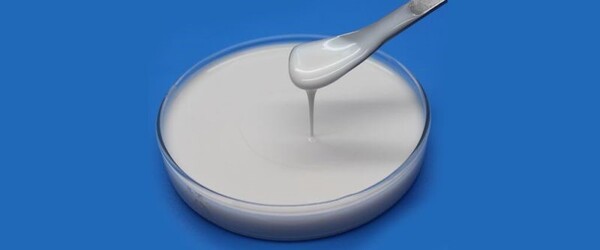
Acrylic Thickener Applications :-
1. Paints and Coatings: Latex Paints: Acrylic thickener additives are widely used in latex paints to achieve the desired viscosity, improve brushability, and prevent sagging on vertical surfaces.
2. Adhesives and Sealants: Water-Based Adhesives: Acrylic thickeners contribute to the viscosity and tackiness of water-based adhesives, aiding in their application and bonding properties.
3. Textile Industry: Printing Pastes: Acrylic thickeners are used in textile printing pastes to control viscosity, ensure uniform application, and enhance the adherence of dyes.
4. Construction Industry: Tile Adhesives and Grouts: Acrylic thickeners play a role in tile adhesives and grouts, improving their workability and adhesive properties.
5. Paper Industry: Paper Coating: Acrylic thickeners are used in paper coatings to control viscosity and improve coating uniformity, enhancing the printability and appearance of the paper.
6. Mining: Mineral Processing: In mineral processing applications, acrylic thickeners may be used to control the viscosity of slurries and improve the settling properties of suspended particles.
7. Oil and Gas Industry: Drilling Fluids: Acrylic thickeners find application in drilling fluids to control viscosity, improve suspension, and enhance the stability of the fluid during drilling operations.
8. Automotive Products: Car Care Products: Acrylic thickener additives can be used in automotive care products such as polishes and waxes to control viscosity and improve application properties.
9. Printing Inks: Ink Formulations: Acrylic thickeners contribute to the viscosity and flow properties of printing inks, ensuring smooth application and print quality.
10. Industrial and Household Cleaners: Cleaning Products: Acrylic thickeners are added to certain cleaning formulations to control viscosity and improve the cling properties of cleaning solutions.
Biocides :-
Biocides additives are critical components used in various industries to prevent the growth and proliferation of microorganisms such as bacteria, fungi, and algae. These additives play a pivotal role in protecting products and processes from microbial contamination, ensuring product integrity, and extending shelf life. Commonly employed in paints, coatings, adhesives, and water-based systems, biocides safeguard against microbial degradation and fouling.
The selection of a suitable biocide depends on the specific application, with some additives offering broad-spectrum protection, while others are tailored for specific microorganisms. Biocides are essential in preserving the quality of industrial fluids, such as metalworking fluids and cooling water systems, where microbial growth can lead to corrosion and operational issues. The effectiveness of biocides in controlling microbial activity contributes to product durability, safety, and overall efficiency in diverse industrial processes. However, careful consideration and adherence to regulatory guidelines are crucial to ensure the responsible and safe use of biocides in various applications.

Biocides Application :-
1. Paints and Coatings: - Preservation: Biocides are incorporated into paints and coatings to protect against the growth of Mold, mildew, and other microorganisms on surfaces.
2. Oil and Gas Industry: - Drilling Fluids: Biocides are used in drilling fluids to control microbial growth that could lead to souring or the degradation of drilling fluid properties.
3. Wood Preservation: - Timber Treatment: Biocides are employed in the preservation of wood products to prevent decay, insect infestation, and fungal growth.
4. Metalworking Fluids: - Cutting Fluids: Biocides are used in metalworking fluids to prevent bacterial and fungal growth, which can lead to the deterioration of fluid properties.
5. Textile Industry: - Preservation of Textiles: Biocides are applied in the textile industry to protect textiles from microbial degradation during storage and transportation.
6. Plastics Industry: - Preservation of Polymers: Biocides may be used in the plastics industry to prevent microbial growth on polymer surfaces.
7. Building Materials: - Construction Materials: Biocides are sometimes incorporated into construction materials such as sealants and adhesives to prevent microbial growth and degradation.
8. Cleaning Products: - Disinfectants and Sanitizers: Biocides are a key component in disinfectants and sanitizers used in household and industrial cleaning applications.
9. Pulp and Paper Industry: - Paper Mill Biocides: Biocides are used in the pulp and paper industry to control microbial growth in paper mills and during paper production.
Defoamer :-
Defoamer additives are essential components in various industrial processes where foam formation can impede efficiency or product quality. Typically composed of oils, waxes, or silicone-based compounds, defoamers act to suppress foam by breaking down surface tension and disrupting bubble formation. Widely used in industries such as manufacturing, agriculture, and wastewater treatment, these additives prevent excessive foam that may hinder processes or lead to equipment malfunctions.
Effective defoamers improve production stability, reduce downtime, and enhance product quality by preventing foam-related issues. The selection of an appropriate defoamer depends on factors such as the type of foaming agents, the specific application, and the compatibility with the system. Defoamer additives play a critical role in optimizing industrial processes by ensuring smooth operations and maintaining the desired characteristics of the final product. However, careful consideration of dosage and formulation compatibility is essential to achieve optimal defoaming performance without adverse effects on the process or product.
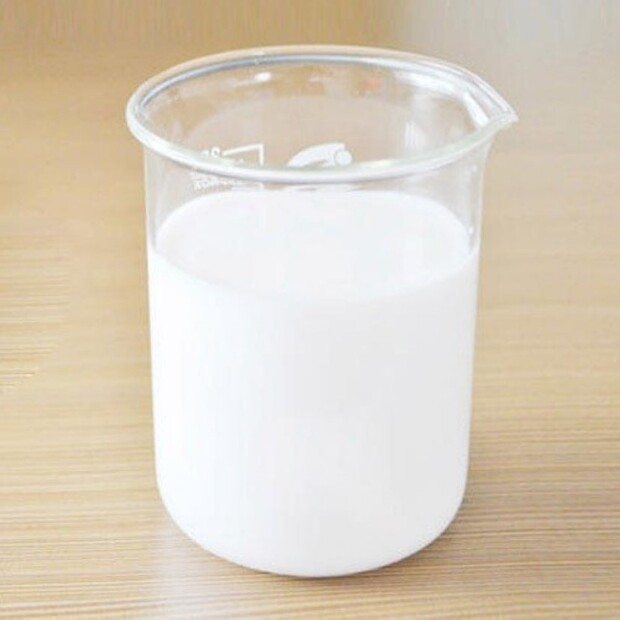
Defoamer Application :-
1. Paints and Coatings: - Paint Manufacturing: Defoamers are added to paint formulations to prevent excessive foam during mixing, production, and application, ensuring a smooth finish.
2. Adhesives and Sealants: - Adhesive Manufacturing: Defoamers are used in the production of adhesives and sealants to control foam during mixing and application processes, improving product quality.
3. Pulp and Paper Industry: - Paper Manufacturing: Defoamers are added to paper pulps and paper coatings to prevent foam formation during various stages of paper production.
4. Textile Industry: - Dyeing and Finishing: Defoamers are added to textile dye baths and finishing processes to control foam, ensuring even dye distribution and improving product quality.
5. Chemical Manufacturing: - Chemical Processing: Defoamers find application in various chemical processes to control foam formation, enhancing the efficiency of chemical reactions and processing.
6. Oil and Gas Industry: - Drilling Fluids: Defoamers are used in drilling fluids to prevent foam during oil and gas drilling operations, aiding in fluid stability and performance.
7. Fermentation Processes: - Biotechnology and Pharmaceuticals: Defoamers are used in fermentation processes for the production of pharmaceuticals and biotechnological products to control foam and improve yield.
8. Detergents and Cleaners: - Cleaning Products: Defoamers are added to cleaning formulations, such as laundry detergents and industrial cleaners, to prevent excessive foam during use.
9. Metalworking Fluids: - Metal Cutting Fluids: Defoamers are employed in metalworking fluids to control foam during machining processes, improving tool performance and surface finish.
10. Brewing and Beverage Industry: - Brewery Operations: Defoamers are used in brewery operations during fermentation and filling processes to control foam and prevent spillage.
Micro Wax :-
Micro wax additives are essential components in various industries, renowned for their versatility and unique properties. Derived from petroleum or synthetic sources, micro waxes are finely divided, low-molecular-weight materials that find applications in coatings, inks, and polymer processing. As additives, micro waxes contribute to surface properties, enhancing scratch resistance, gloss, and overall durability in coatings. In the printing ink industry, they aid in reducing friction, improving printability, and imparting a smooth finish.
Micro waxes are crucial in the plastics and rubber industries, where they act as processing aids, preventing sticking and enhancing Mold release properties. Additionally, in the adhesive industry, micro wax additives contribute to tack reduction, preventing unwanted adhesion during storage or application. The broad utility of micro wax additives across diverse applications underscores their significance in optimizing performance and providing valuable enhancements to the properties of coatings, inks, polymers, and adhesives.

Micro Wax Application :-
1. Adhesives: - Hot-Melt Adhesives: Microcrystalline wax is added to hot-melt adhesives to modify their properties, improving adhesion, flexibility, and adjusting the melting point.
2. Printing Inks: - Lithographic Inks: Microcrystalline wax is used in lithographic inks to enhance rub resistance, reduce tackiness, and improve the overall performance of the ink on the printing press.
3. Candles: - Blended Candle Waxes: Microcrystalline wax is often blended with other waxes, such as paraffin, to create candles with specific characteristics, including increased hardness and reduced brittleness.
4. Rubber and Tire Industry: - Tire and Rubber Compounding: Microcrystalline wax is used as a processing aid in rubber compounding to improve processing, reduce compound viscosity, and enhance the dispersion of other ingredients.
5. Packaging Industry: - for Paper and Board: Microcrystalline wax coatings are applied to paper and board in the packaging industry to improve water resistance, enhance printability, and provide a protective layer.
6. Woodworking: - Wood Finishes and Polishes: Microcrystalline wax is used in wood finishes and polishes to provide a durable and glossy surface, enhance water resistance, and protect against wear.
7. Textile Industry: - Textile Finishes: Microcrystalline wax can be applied as a finish on textiles to provide water repellence and improve the fabric's overall durability.
8. Electronics Industry: - Cable and Wire Insulation: Microcrystalline wax is used in cable and wire insulation to provide moisture resistance and enhance the flexibility of the insulation material.
9. Art and Sculpture: - Modelling and Sculpting: Microcrystalline wax is used by artists and sculptors for modelling and sculpting due to its malleability and ability to hold intricate details.
Natural Red Oxide :-
Natural red oxide additives, derived from iron ore deposits, are widely utilized for their unique properties and versatile applications. These additives are primarily known for their vibrant red colour, making them valuable in the formulation of paints, coatings, and pigments.
Natural red oxides are favoured for their environmentally friendly and non-toxic nature, making them suitable for various industries. In construction, they play a crucial role in colouring concrete, mortar, and tiles, providing durability and enhancing aesthetic appeal. These additives are also utilized in the cosmetic industry for their natural colorant properties, particularly in makeup products. Additionally, natural red oxide additives find application in the manufacturing of ceramics and plastics, contributing to the desired coloration and performance characteristics. Their widespread use highlights the importance of natural red oxides in providing colour consistency, UV resistance, and a sustainable alternative for various industrial and aesthetic applications.
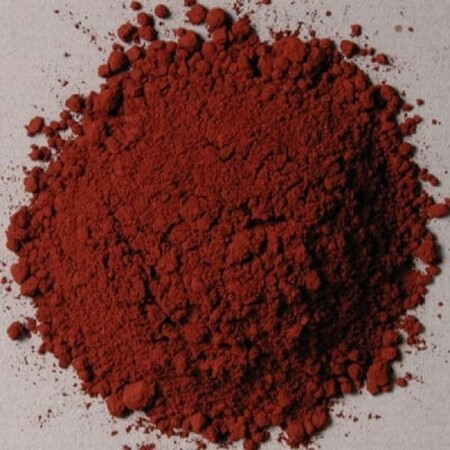
Natural Red Oxide Applications :-
1. Paints and Coatings: - Architectural Paints: Natural red oxide is used as a pigment in architectural paints, including exterior and interior paints, to provide a durable and vibrant red colour.
2. Construction Industry: - Concrete and Masonry: Natural red oxide is added to concrete and masonry products such as bricks, tiles, and paving stones to colour the material and enhance its aesthetic appeal.
3. Plastics and Polymers: - Masterbatches: Natural red oxide is incorporated into plastic masterbatches to colour plastic products such as PVC pipes, plastic sheets, and other polymer-based materials.
4. Ceramics: - Ceramic Glazes: Natural red oxide is used in ceramic glazes to provide a red colour to pottery and ceramic products during the firing process.
5. Inks: - Printing Inks: Natural red oxide is used as a pigment in various printing inks, including those used in packaging, labels, and publications.
6. Rubber Industry: - Rubber Products: Natural red oxide is added to rubber compounds to colour products such as automotive tires, rubber hoses, and other rubber-based items.
7. Art and Craft Supplies: - Paints and Pastels: Natural red oxide is used in art and craft supplies, including paints, pastels, and coloured pencils, for its rich red hue.
8. Wood Stains: - Wood Finishes: Natural red oxide is employed in wood stains and finishes to provide a red tint to wooden surfaces.
9. Ferrofluids: - Ferrofluid Manufacturing: Natural red oxide nanoparticles can be used in the production of ferrofluids, which are magnetic liquids with various applications in technology and research.
10. Paper Industry: - Coloured Paper: Natural red oxide is sometimes used in the production of coloured paper to create red hues in notebooks, stationery, and other paper products.
Synthetic Red Oxide :-
Synthetic red oxide additives, created through chemical processes, offer a versatile and stable alternative to natural sources. Widely employed in industries such as paints, coatings, and plastics, these additives provide a consistent and vibrant red hue. Unlike natural sources, synthetic red oxides can be precisely engineered to meet specific colour and performance requirements. Their uniform particle size distribution ensures superior colour dispersion, making them ideal for achieving desired shades in various applications.
Synthetic red oxide additives also exhibit excellent lightfastness and weather resistance, making them suitable for outdoor applications where colour durability is crucial. Additionally, their synthetic nature allows for better control over impurities, contributing to enhanced product quality. The versatility, stability, and customizable properties of synthetic red oxide additives make them valuable components in industries where precise coloration and performance are essential.
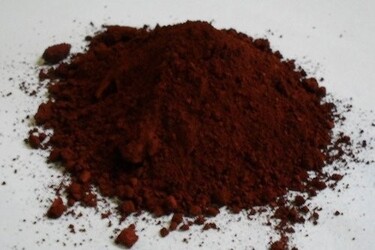
Synthetic Red Oxide Applications :-
1. Paints and Coatings: - Architectural Paints: Synthetic red oxide is used as a pigment in architectural paints, including exterior and interior paints, to provide a durable and vibrant red colour.
2. Construction Industry: - Concrete and Masonry: Synthetic red oxide is added to concrete and masonry products such as bricks, tiles, and paving stones to colour the material and enhance its aesthetic appeal.
3. Plastics and Polymers: - Masterbatches: Synthetic red oxide is incorporated into plastic masterbatches to colour plastic products such as PVC pipes, plastic sheets, and other polymer-based materials.
4. Ceramics: - Ceramic Glazes: Synthetic red oxide is used in ceramic glazes to provide a red colour to pottery and ceramic products during the firing process.
5. Inks: - Printing Inks: Synthetic red oxide is used as a pigment in various printing inks, including those used in packaging, labels, and publications.
6. Rubber Industry: - Rubber Products: Synthetic red oxide is added to rubber compounds to colour products such as automotive tires, rubber hoses, and other rubber-based items.
7. Art and Craft Supplies: - Paints and Pastels: Synthetic red oxide is used in art and craft supplies, including paints, pastels, and coloured pencils, for its rich red hue.
8. Wood Stains: - Wood Finishes: Synthetic red oxide is employed in wood stains and finishes to provide a red tint to wooden surfaces.
9. Ferrofluids: - Ferrofluid Manufacturing: Synthetic red oxide nanoparticles can be used in the production of ferrofluids, which are magnetic liquids with various applications in technology and research.
10. Paper Industry: - Coloured Paper: Synthetic red oxide is sometimes used in the production of coloured paper to create red hues in notebooks, stationery, and other paper products.
Organic Pigment :-
Organic pigment additives are essential colouring agents widely used in various industries for their vivid hues, stability, and versatility. Derived from carbon-based compounds, these pigments offer a broad spectrum of colours and are commonly employed in applications such as paints, inks, plastics, and textiles. Organic pigments are known for their high tinting strength, allowing for vibrant coloration with minimal usage. Their chemical stability ensures resistance to fading, making them suitable for outdoor applications.
Additionally, organic pigments provide excellent transparency, enabling the creation of a diverse range of shades and effects. The ability to disperse uniformly in various mediums contributes to their widespread use in different formulations. The environmental friendliness of certain organic pigments further aligns with industry trends favouring sustainable and eco-friendly solutions. Overall, the vibrant colour options, chemical stability, and environmentally conscious features make organic pigment additives integral components in achieving desired aesthetics and performance characteristics across multiple industries.
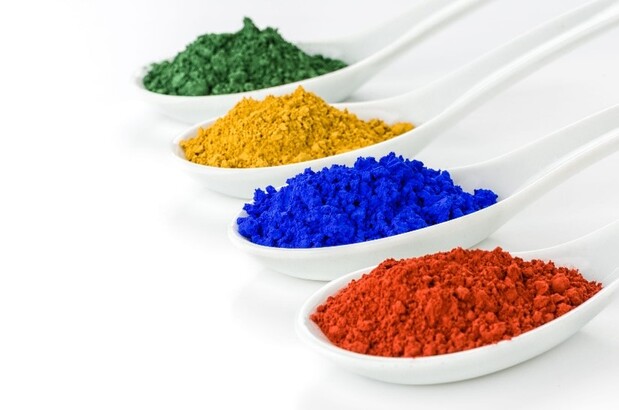
Organic Pigment Applications :-
1. Paints and Coatings: - Architectural Paints: Synthetic red oxide is used as a pigment in architectural paints, including exterior and interior paints, to provide a durable and vibrant red colour.
2. Construction Industry: - Concrete and Masonry: Synthetic red oxide is added to concrete and masonry products such as bricks, tiles, and paving stones to colour the material and enhance its aesthetic appeal.
3. Plastics and Polymers: - Masterbatches: Synthetic red oxide is incorporated into plastic masterbatches to colour plastic products such as PVC pipes, plastic sheets, and other polymer-based materials.
4. Ceramics: - Ceramic Glazes: Synthetic red oxide is used in ceramic glazes to provide a red colour to pottery and ceramic products during the firing process.
5. Inks: - Printing Inks: Synthetic red oxide is used as a pigment in various printing inks, including those used in packaging, labels, and publications.
6. Rubber Industry: - Rubber Products: Synthetic red oxide is added to rubber compounds to colour products such as automotive tires, rubber hoses, and other rubber-based items.
7. Art and Craft Supplies: - Paints and Pastels: Synthetic red oxide is used in art and craft supplies, including paints, pastels, and coloured pencils, for its rich red hue.
8. Wood Stains: - Wood Finishes: Synthetic red oxide is employed in wood stains and finishes to provide a red tint to wooden surfaces.
9. Ferrofluids: - Ferrofluid Manufacturing: Synthetic red oxide nanoparticles can be used in the production of ferrofluids, which are magnetic liquids with various applications in technology and research.
10. Paper Industry: - Coloured Paper: Synthetic red oxide is sometimes used in the production of coloured paper to create red hues in notebooks, stationery, and other paper products.
TiO2 Replacement :-
Titanium dioxide (TiO2) replacement fillers are alternatives to conventional TiO2-based fillers in various industrial applications. These substitutes are sought for their cost-effectiveness, reduced environmental impact, and functional attributes. Typically composed of minerals like calcium carbonate, talc, or kaolin, TiO2 replacement fillers offer competitive opacity and brightness while mitigating the economic challenges associated with the fluctuating prices of TiO2. The use of these alternatives is driven by their ability to maintain product performance in applications such as paints, coatings, plastics, and paper, providing an efficient solution for manufacturers seeking cost savings without compromising quality. Additionally, TiO2 replacement fillers contribute to sustainability efforts by reducing dependence on a resource-intensive material like titanium dioxide. The selection of a suitable replacement filler depends on the specific requirements of the application, emphasizing factors like particle size, opacity, and compatibility with the intended medium. The adoption of TiO2 replacement fillers reflects an industry shift toward sustainable and cost-efficient solutions in the formulation of various products.
The replacement of titanium dioxide (TiO2) in various applications can be achieved by using alternative fillers that serve similar functions. TiO2 is a commonly used white pigment and opacifier in a wide range of industries, but there are situations where cost, performance, or environmental considerations drive the need for alternatives. Here are some potential TiO2 replacement fillers used in different applications:
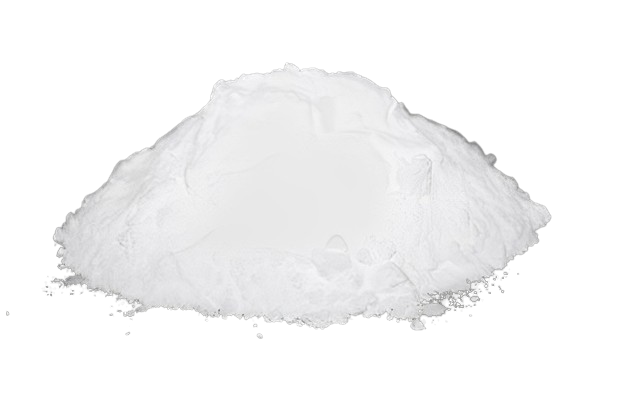
TiO2 Replacement Application :-
1. Calcium Carbonate (CaCO3): - Paints and Coatings: Calcium carbonate can be used as a partial replacement for TiO2 in paints and coatings to achieve opacity and improve hiding power. It is a cost-effective alternative.
2. Zinc Oxide (ZnO): - Sunscreen: In sunscreen formulations, zinc oxide can be used as a replacement for TiO2 to provide UV protection. Both zinc oxide and TiO2 are common inorganic UV filters.
3. Kaolin (Aluminium Silicate): - Paper Industry: Kaolin is used in the paper industry as a filler and coating pigment. It can be used to replace TiO2 in certain paper applications while providing opacity.
4. Barium Sulfate (BaSO4): - Plastics: Barium sulfate can be used as a filler in plastics to replace TiO2 in some applications. It contributes to opacity and improves the density of the material.
5. Silica (SiO2): - Plastics and Rubber: Silica can be used as a reinforcing filler in plastics and rubber compounds. While not a direct replacement for TiO2, it can contribute to certain physical properties.
6. Alumina Trihydrate (ATH): - Flame Retardants: ATH is used as a flame retardant and smoke suppressant. While not a direct replacement for TiO2, it can be used in specific applications where flame resistance is a priority.
7. Talc (Magnesium Silicate): - Plastics: Talc can be used as a filler in plastics to improve stiffness and reduce costs. It is not a direct replacement for TiO2 but is used in combination with other fillers.
8. Mica: - Cosmetics: Mica is a natural mineral often used in cosmetics as a pearlescent pigment. It may be used as an alternative to TiO2 in certain formulations.
Aluminium Compound :-
Aluminium compound fillers, derived from various aluminium-based compounds, serve as versatile fillers with applications in multiple industries. These fillers are often employed in areas such as plastics, rubber, adhesives, and coatings to enhance product properties. With aluminium oxide being a common component, these fillers contribute to increased hardness, thermal conductivity, and flame resistance in materials.
The use of aluminium compound fillers is also prevalent in the automotive and aerospace industries, where their lightweight properties and strength are advantageous. Additionally, aluminium fillers find application in electronics for their ability to dissipate heat efficiently. The selection of a specific aluminium compound filler depends on the desired characteristics, including particle size, purity, and the intended function within the final product. Overall, aluminium compound fillers play a significant role in improving the mechanical, thermal, and flame-retardant properties of diverse materials across various industrial applications.
Aluminium-based compounds are utilized as fillers in various industries for different applications. These compounds offer unique properties such as lightweight characteristics, heat resistance, and often play a role in enhancing specific material properties. Here are some examples of aluminium compound fillers used in different applications:

Aluminium Compound Application :-
1. Aluminium Hydroxide (Al(OH)3): - Flame Retardants: Aluminium hydroxide is commonly used as a flame retardant filler in plastics, rubber, and other materials. It releases water vapor when exposed to heat, providing fire resistance.
2. Aluminium Silicate: - Plastics and Rubber: Aluminium silicate is used as a filler in plastics and rubber to enhance mechanical properties, improve dimensional stability, and reduce costs.
3. Calcined Alumina (Al2O3): - Abrasive Products: Calcined alumina is used as a filler in abrasive products such as grinding wheels and sandpapers to enhance hardness and wear resistance.
4. Aluminium Trihydrate (ATH): - Thermoplastics and Elastomers: Aluminium trihydrate is used as a flame retardant filler in thermoplastics and elastomers. It releases water vapor during combustion, suppressing flames.
5. Aluminium Oxide (Al2O3): - Ceramics: Aluminium oxide is used as a filler in ceramics to improve hardness, wear resistance, and thermal conductivity. It is also used in refractory materials.
6. Aluminium Powder: - Epoxy Resins and Paints: Fine aluminium powder is used as a filler in epoxy resins, paints, and coatings to impart metallic or reflective properties and enhance conductivity.
7. Aluminium Phosphate: - Adhesives and Sealants: Aluminium phosphate can be used as a filler in adhesives and sealants to improve fire resistance and adhesion properties.
8. Aluminium Sulfate (Al2(SO4)3): - Water Treatment: Aluminium sulfate is used as a coagulant and flocculant in water treatment processes. While not a traditional "filler," it is used to clarify water by removing impurities.
9. Aluminium Flake: - Paints and Coatings: Aluminium flakes are used as fillers in metallic paints and coatings to create a reflective or metallic appearance.
10. Aluminium Borate: - Polymer Composites: Aluminium borate can be used as a filler in polymer composites to enhance thermal and mechanical properties.
11. Aluminium Acetate: - Textile Industry: Aluminium acetate is used as a filler in the textile industry, particularly in the production of certain fabrics and textiles.
12. Aluminium Nitride (AlN): - Electronic Ceramics: Aluminium nitride is used as a filler in electronic ceramics to improve thermal conductivity and provide electrical insulation.
These aluminium-based compounds serve different purposes depending on the industry and application. They contribute to a variety of properties such as flame resistance, mechanical strength, thermal conductivity, and visual effects in materials. The choice of a specific aluminium compound filler depends on the desired characteristics and performance requirements of the end product.
stahe3
Activators - Magnesium Oxide :-
Super Mag 150 is a highly active Magnesium Oxide mainly used as an acid scavenger, scorch retarder, or curing agent during the cross-linking of several rubber compounds containing halogens or nitrile groups e.g., Chloroprene rubber and Synthetics Rubber (FKM, CIIR, BIIR, CPE). Supermag series high active magnesium oxide grades provide better processability, reduced mixing time, a higher shelf life, and finally works on lower dosages 3 to 4 phr. We have both surface-treated and untreated grades of Supermag 150 for the convenience of the customers.
Activators - Magnesium Oxide Application :-
Rubber
2. Activators - Zinc Oxide :-
Our Zinkomer series of activators are uniquely developed products , thereby exhibiting better process ability , lowering down mixing time , improving dispersion , maintaining excellent rheology properties , heat ageing properties and mechanical properties. These products replace Zinc Oxide 100 % as an activator for Rubber . Last but not the least these are techno commercially immensely beneficial as compared to conventional White Seal and Active products.
Applications - Rubber,Brake Composite
Fumed Silica :-
Fumed silica is manufactured via a dry process of combustion hydrolysis in the gas state. The primary particles consist of nano-size flakes. Fumed silica, structurally, has no gap among particles and is weakly agglomerated together with minimal internal surface area.
Fumed silica is traditionally utilized for rheological purposes. The Rheology control function includes thickening (bodying), Thixotropy, Anti-sag, Hold out, Edge coverage and Pattern control in metallic finishes. The coating uniformity is improved by preventing the pigment stratification during the curing, even at high temperatures.
JKP Micro Minerals offers a range of Fumed Silica based on the Viscoity and rheology demanded in end formulation for industries like Paints and coating, plastics, Textiles, Adhesives, Construction chemicals etc.
Fumed Silica Application :- Cosmetics, Rubber, Painta & Coatings, Adhesive & Sealants, Construction, Batteries, Inks & Pigments
Graphite :-
Micron GRP series is a synthetic graphite powder, it is used as a black colorant powder, and further the usage with epoxy solvent free system can help to produce a low friction exterior coating with increased scuff resistance and durability. The graphite and epoxy system can also be used in deck construction to protect the epoxy from sunlight.
We have graphite in size of 45microns to JKP Microminerals sizes an are used in application of Adhesive, brake pads, lubrications, foundrys etc.
Applications Graphite :- Ceramic, Batteries, Brake Composite, Oil & Gas
Kaolin :-
Kaolin also known as china clay, is a white commercial clay consisting predominantly of the mineral kaolinite, a hydrated aluminosilicate formed by chemical weathering of alluminium silicate minerals.
Kaolin is commercially valued for its whiteness and fine particle size which distinguish it from other clays. In addition to that other physical characteristics that influence commercial utility include brightness, glossiness, abrasiveness and viscosity etc. Kaolin is produced and consumed by many industries in crude & processed forms.
JKP Microminerals offers a range of processed kaolin in form of hydrous and calcined from their state of the art manufacturing units located in Gujarat, Rajasthan and Tamilnadu in India. This specially developed sustainable engineered kaolin helps to achieve excellent properties in various industries like Paint and Coating, Paper, Rubber, Cosmetics, Plastics, Adhesive, Ceramic and more
Kaolin Applications :- Cosmetics, Ceramic, Plastic & Polymer, Rubber, Paints & Coatings, Paper & Boards, Foundry Coatings, Adhesive & Sealants, Agro, Detergent & Soaps, Brake Composite, Welding Electrodes, Inks & pigments
Mica :-
Mica is a generic term applied to a group of complex alumino-silicate minerals having a sheet or plate like structure. JKP Microminerals brand “Micron Mica” and “AR Mica T” is a natural dry milled muscovite mica with high brightness and high purity possessing high reflective and refractive index imparting natural pearl-like lustre and magical gloss with abundant fascinating colours and enticing appearance.
This product has an exceptional platy structure with a very high aspect ratio, achieve by meticulous care and precaution is taken during production to avoid deterioration of it’s Natural Brilliance, Colour and Properties. This products is free from Crystalline Silica and Free of Asbestos.
From Coatings to Plastics and Cosmetics to Rubber, JKP Microminerals caters its Mica products for various applications designed specifically to meet the properties to enhance the value of the end products.
Mica Applications :- Cosmetics, Ceramic, Plastic & Polymer, Rubber, Paints & Coatings, Foundry Coatings, Brake Composite, Welding Electrodes, Oil & Gas
Organo Clays - Rheological Additive :-
Organoclay is an organically modified phyllosilicate (Bentonite), derived from a naturally occurring clay mineral. The main component of Organoclay is bentonite, a chemically altered volcanic ash that consists primarily of the clay mineral montmorillonite. The bentonite in its natural state can absorb up to seven times its weight in water, after treatment can absorb only 5 to 10 percent of its weight in water, but 40 to 70 percent in oil, grease, and other sparingly-soluble, hydrophobic chlorinated hydrocarbons.
Organoclay can be used to remove oil from water, as a component in paint formulations or as a viscosifier for oil-based drilling fluids. It can be used in polymer chemistry as a nucleating agent.
This organo clay has important role in imparting rheology and mechanical stability in application of Paints & Coating, adhesive and Sealants, Ceramics, Cosmetics.
Organo Clays - Rheological Additive Applications :- Cosmetics, Paints &Coatings, Adhesive & Sealants, Costruction, Inks & Pigments, Oil & Gas
Performance Mineral Additive :-
We are the world leader in specialized mineral-based solutions for industry. JKP Microminerals Teams R&D and application support team works round the clock to support innovative and global standard grades of the highest quality and with more efficiency across the industries of Paints, plastic, rubber ceramic, adhesive, construction, and construction chemical, and other many industries.
Our range of performance-based minerals basked are solutions based on the processing and refining of our mineral resources, synthetic minerals, and formulations. We process or produce these metals into solutions that are tailored to their end-use and that exactly meet the requirements of our customers.
This product helps to ungraded your product performance and add value to your product by improving its rheological, mechanical, and other physical properties in your finished formulations.
Performance Mineral Additive Applications :- Cosmetics,Rubber, Paints & Coatings, Construction, Others, Textile, Oil & Gas
Perlite :-
Perlite in its natural state is an amorphous volcanic mineral which contains 3-5% percent of combined water.
1) Crude perlite rock may range from transparent to light gray to glossy black,
2)the color of expanded perlite ranges from snowy white to grayish white.
When crushed and heated under proper conditions, it pops like “POPCORN", expanding to 20 or more times its original volume.
The unique structure of Expanded Perlite material produces with many inter-locking fragmented particles. This expansion process is due to the presence of 2 to 6% combined water in the crude perlite rock. When quickly heated to above 1600 F (870⁰ C) the crude rock pops in a manner similar to popcorn as the combined water vaporizes and creates countless tiny bubbles in the softened glassy particles.
It is these tiny glass-sealed bubbles which account for the amazing lightweight and other exceptional physical properties of expanded perlite. The expansion process also creates one of perlite's most distinguishing characteristics: its white color.
Perlite has its application in Filter Aid, textured Paints, Construction, Horticulture, Foundry and Cosmetics.
Perlite Applications :-Foundry
Ramming Mass :-
Uniform size distribution is an essential to ensure good compact lining and least open space between particles which results in greater strength and life of the furnace. JKP Microminerals offers consistent quality of Ramming Mass produced by crushing and grading of good quality Quartz, and this high purity Quartz yields more lining life. It also results in considerable uniformity in physical properties. Produced by using carefully controlled facility, our Ramming Mass is well accepted in Coreless Induction Furnaces for melting of scrap to liquid steel. It is a dry lining refractory that can be used for all types of iron, steel, aluminum and foundries.
Ramming Mass Applications :- Foundry
Synthetic Barytes :-
Our brands “Basofix” for Whiter Shades and “Barigloss” for Darker Shades is an inspiring innovation from JKP Microminerals with an ultra-fine average particle size of 0.7 microns specially developed for paint, powder coating and pigments manufacturing application. Special production methods and various inorganic treatments now permit customized solutions for the most diverse range of problems/applications. The fine particle size imparts high gloss and coverage whereas the white colour imparts excellent shade and brightness to the end product.
Ultra-fine particle of Synthetic Barium Sulphate act as a spacer for prime pigments and hence contributes to the hiding with very high gloss in end application. It is totally inert under normal conditions, and possesses high resistance to outdoor exposure and to chemicals. It has no influence on the viscosity, so it is possible to use precipitated Barium Sulphate to the highest percentage in the formulation. It has no effect on the gloss. Thus, precipitated Barium Sulfate help to reduce VOC and replaces the more expensive pigments, to reduce formulation costs and provide a good opportunity.
Oil absorption and specific surface area of carbon black and precipitated Barium Sulphate have a big difference, by flocculation resistance, effective role of black carbon can only be increased marginally, if use precipitated Barium Sulfate instead of lots of carbon black it will reduce the quantity of base demand and viscosity, and further will reduce the VOC.
Basofix Micro performs brilliantly in application like Paints and coatings, Plastics and rubber Adhesive, Ceramics etc.
Synthetic Barytes Applications :- Plastic &Polymer, Paints & Coatings, Adhesive & Sealants, Construction, Batteries
Titanium Dioxide - Buff & Grey :-
JKP Microminerals entered into the TiO2 space with its newest ultra-fine Buff Colored TiO2 branded “Glowtox”. It is a surface treated rutile Titanium Dioxide that is beige in color and offers comparable performance characteristics such as opacity to white titanium dioxide.
It is a high purity micronized pigment and cost Effective. In many products which require opacity and color but which do not have to be pure white, Buff Titanium Dioxide can economically replace all or part of the Titanium White or other expensive pigments that may be used.
G Tox and C Tox are brands for offering grey and Buff Tio2 respectively , This Tio2 disperses easily on high speed equipment and is commonly used in paint & coatings, plastics, paper, and other applications. In products which require opacity and colour i.e. non-white paints, this Tio2 pigments can reduce the amount of expensive organic & inorganic pigments as well as white TiO2. In addition to white TiO2, this may replace phthalo blues and greens, hansa yellows, organic oranges, synthetic iron oxides, and carbon black (in whole or in part, depending on formulation) and provides you the same bright colors you have now.
Titanium Dioxide - Buff & Grey Applications :- Cosmetics, Plastic & Polymer, Rubber, Paints & Coatings, Adhesive & Sealants, Construction
Titanium Dioxide - White :-
JKP Microminerals offer range of white rutile based Titanium Dioxide in the brand of Nanotox, This product is a rutile multipurpose titanium dioxide pigment produced by inorganic and organic surface treated. It has fine particle size distribution and remarkable dispersibility, designed to give the excellent gloss, high opacity and outstanding durability and good dispersion properties.
The consistency and uniformity in the offering is the key aspects in our Tio2 our offered Tio2 gives exceptional Tint strength, High Gloss, and Superior dispersibility.
This Tio2 has in application In array of application like Paints and Coatings, Plastic , Adhesive, cosnt chemicals, ceramics, and foundry coatings etc.
Titanium Dioxide - White Applications :- Cosmetics, Ceramic, Plastic & Polymer, Rubber, Adhesive & Sealants, Construction, Textile, Welding Electrodes
Wax And Wax Additives :-
JKP Microminerals offers a range of PE, PTFE and Amide Waxes which is a wax powder with an average particle size of less than ten micrometers. Only hard wax can be ground this fine. Only low melt viscosity wax can be sprayed this fine. Micronised Wax products are successfully used today in many industries, such as Paints, Coatings, Plastics, Inks and Adhesives.
This waxes suitable where demand for High Transparency and Gloss, and improve the Hand Feeling Abrasion and Scratch Resistance are required , it offers thermally stable lubricant with high brightness and able to replace both of internal and external lubricant. It enhances Brightness and Surface Finish considerably, improves impact strength and other Mechanical Properties
This waxes are offered in varies solid content and melting points to meet the requirement of the finished products.
Wax And Wax Additives Applications :- Cosmetics, Plasti & Polymer, Rubber, Paints & Coatings, Adhesive & Sealants, Construction, Textile, Inks & Pigments